Streetcar Will Use Festivals-Oriented Route Through Summer
Line makes it easier to access lakefront, but slower to travel north.
Milwaukee’s two streetcar lines will continue to operate as one through the end of summer.
It’s the second time the city has expanded the new service configuration, which has a mix of positives and negatives.
The Festivals Line makes it easier to access the lakefront and Henry Maier Festival Park, but imposes delays on riders heading north from the Historic Third Ward to Downtown and the Lower East Side.
It was first announced that the Festivals Line would operate only on the days Summerfest was occurring, June 20-22, June 27-29 and July 4-6, but then was expanded to include every day in mid-June through the end of the festival. Now it’s here to stay “throughout the summer,” the city-owned transit system announced in a social media post Monday.
This year marks the first year The Hop has operated with its new lakefront (L) line during Summerfest. The extension opened to everyday service in April and overlaps with a portion of the M Line route.
The Festivals Line configuration will now aid those seeking to get to the remaining lakefront festivals, including German Fest, Irish Fest, Black Arts Fest MKE and Mexican Fiesta. Bastille Days, which is located on The Hop route in Cathedral Square Park, will occur this week and has historically contributed to the highest ridership weekend of the year.
Merging the lines avoids the requirement to transfer between lines if coming to the lakefront from the Milwaukee Intermodal Station or Lower East Side. It also prevents riders from possibly boarding the wrong vehicle.
The L Line runs on existing M Line tracks along N. Milwaukee Street and N. Broadway, but when going north follows an eastern extension along E. Michigan Street to the lakeside The Couture tower before returning to the north-south route on E. Clybourn Avenue. The longer M Line, which opened in 2018, runs from the Milwaukee Intermodal Station through the northern end of the Historic Third Ward and much of East Town before ending at E. Ogden and N. Prospect avenues at the southern tip of the Lower East Side.
In order to merge the two routes, all northbound vehicles are following the lakefront extension east on E. Michigan Street and back on E. Clybourn Avenue before continuing with the rest of the route.
The configuration imposes an approximately 10-minute delay on riders getting on at the Historic Third Ward stop or Milwaukee Intermodal Station and heading north of Wisconsin Avenue. But the perceived delay is partially offset by increased service frequency, reducing wait times before climbing aboard a vehicle. Southbound trips are unimpacted.
“With the ‘Festivals Line,’ passengers boarding at Intermodal will reach the Lakefront stop in just 12 minutes, a trip from the Historic Third Ward will take eight minutes, and reaching the festival grounds from Burns Commons will take approximately 36 minutes,” said a May 30 press release. “Lakefront/Summerfest passengers wanting to return to the Downtown Business District, Historic Third Ward or Intermodal station can transfer at Cathedral Square to the next southbound streetcar rather than traveling up to Burns Commons [and back].” The Burns Commons to festival trip time assumes riding on the vehicle until it reverses at the Intermodal and begins the northbound route.
The streetcar system remains free to ride, due in part to corporate sponsorship by Potawatomi Hotel & Casino. The 2024 city budget calls for $5.8 million to be spent on operating the system. That expense is to be offset by $4.5 million in direct revenue, with the remainder coming from the city’s parking revenue. Direct revenue sources include Potawatomi ($850,000), other sponsors ($100,000), a federal pandemic-related transit grant ($2.4 million), a congestion mitigation startup grant ($880,000) and a federal transit support grant ($279,000).
Festivals Line
Existing System Map
If you think stories like this are important, become a member of Urban Milwaukee and help support real, independent journalism. Plus you get some cool added benefits.
More about the Milwaukee Streetcar
For more project details, including the project timeline, financing, route and possible extensions, see our extensive past coverage.
- Alderman, State Allies Seek Federal Help to Kill the Streetcar - Jeramey Jannene - Oct 28th, 2025
- Streetcar Service Suspended Following Truck Crash - Jeramey Jannene - Oct 21st, 2025
- One Alderman’s Quest To Defund The Streetcar - Jeramey Jannene - Oct 18th, 2025
- Another Streetcar Collision - Jeramey Jannene - Jun 27th, 2025
- Streetcar Hit By Apparent Red Light Runner - Jeramey Jannene - Jun 16th, 2025
- Streetcar Will Run On Consolidated Route During Summerfest - Jeramey Jannene - Jun 11th, 2025
- City Hall: Milwaukee Must Replace Failing Streetcar Switches - Jeramey Jannene - Feb 24th, 2025
- Streetcar Confronts Limited Funding, Operations Challenges - Evan Casey - Jan 22nd, 2025
- Council Kills Streetcar’s ‘Festivals Line’ - Jeramey Jannene - Jul 31st, 2024
- Streetcar Will Use Festivals-Oriented Route Through Summer - Jeramey Jannene - Jul 9th, 2024
Read more about Milwaukee Streetcar here
Transportation
-
MCTS Adds 28 New Buses
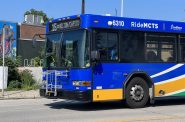 Jul 13th, 2024 by Graham Kilmer
Jul 13th, 2024 by Graham Kilmer
-
MCTS Designing New Bus Shelters
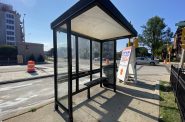 Jul 10th, 2024 by Graham Kilmer
Jul 10th, 2024 by Graham Kilmer
-
MCTS Updates RNC Bus Detours To Better Serve Downtown, Riders
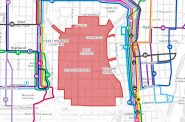 Jul 9th, 2024 by Jeramey Jannene
Jul 9th, 2024 by Jeramey Jannene


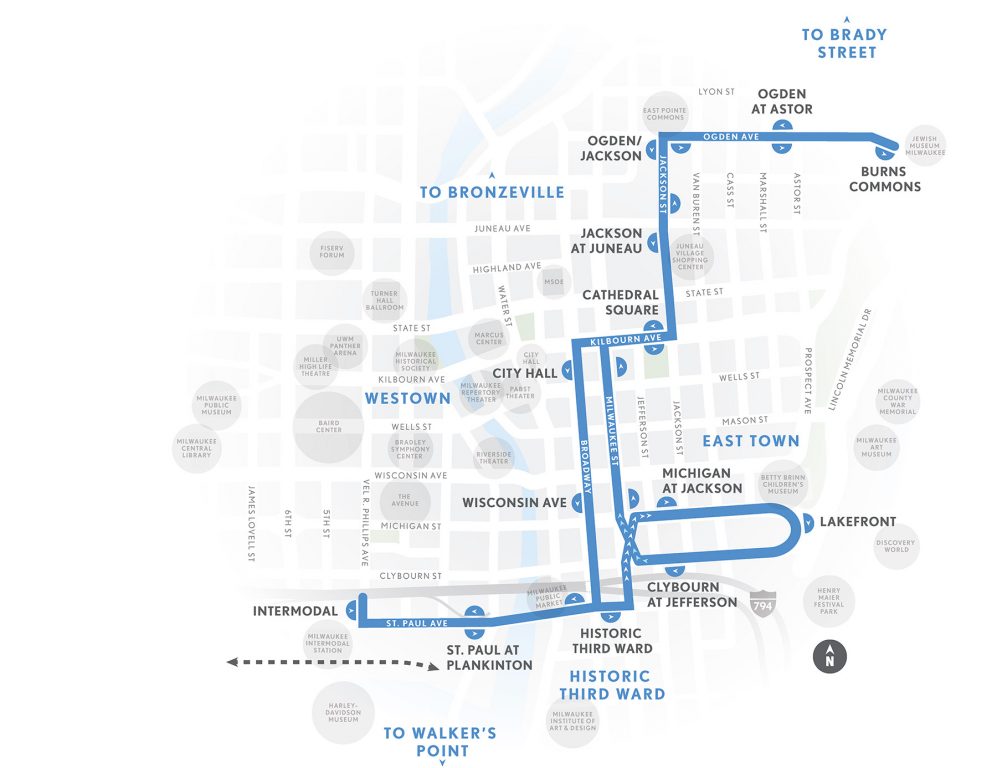
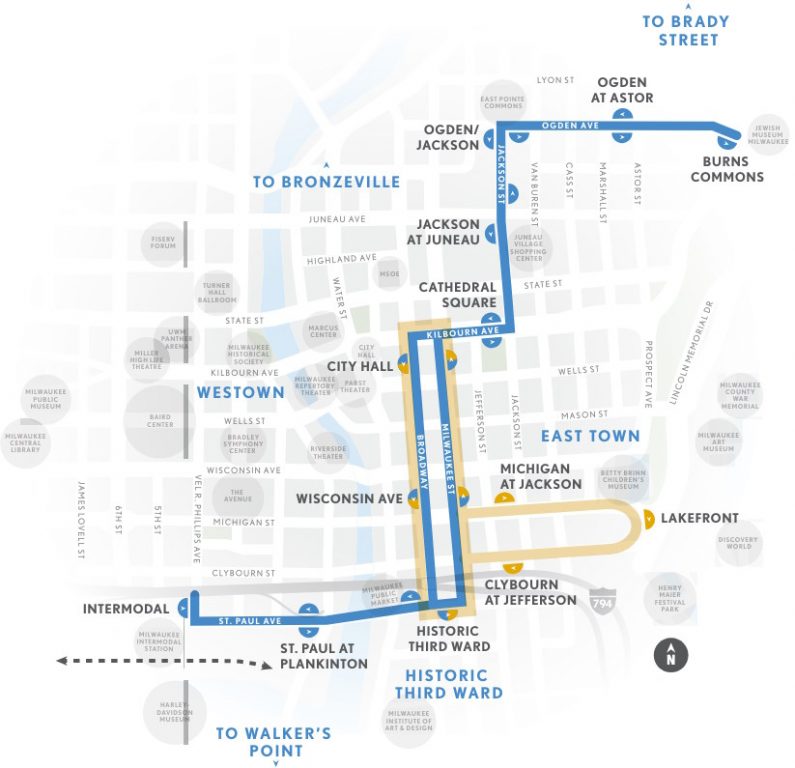

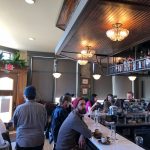
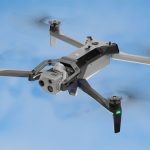







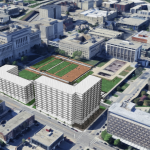







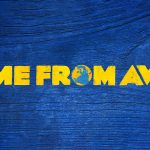

It has an increased service frequency at all for MLine riders. In the traditional service pattern a vehicle comes every 15 minutes, Now they come every 15 minutes but with more delays and a weird detour if you’re going north from the third ward.
It doesn’t even make it easier to get to the lakefront from most of the route. Going to the intermodal and back is a massive delay if you’re coming from the north.
The Hopp hasn’t traditionally had good wayfinding, and we should improve that, but based on the last few weeks I cannot say this is a good solution
Yeah, the “Festival Route” seems designed for people who won’t be able to handle a transfer–so just get on and take the scenic route… Think families and people visiting the City.
Suffice it to say the L-Line was built to help get funding to build the Couture. Failure to use that funding in a timely way has, conversely, caused the feds to avoid giving MKE additional funds for further Hop expansion. The L-Line sounds nice–you can take it to the Lake!–but it’s a bit quirky.
Man, I would love to see that further expansion happen. Oh, and more cars and better frequency. The Hop, as it is, is a starter system built to make more sense and have higher ridership with extensions to the other neighborhoods.
Apparently there was never any awareness of, let alone cost-benefit
discussion regarding turnouts (switch tracks).
Each person will find usefulness in a variety of route configurations. This full-loop festival mode makes a trip from the 3rd ward north more time-consuming for people not going to the Lakefront and involves the unnecessary loop to the lakefront. What could be restored is the option for the MAIN line on some runs and allow people to choose. Most transit systems set lines to cover specific geographic areas, allowing riders to optimize their route and trips using the system. Perhaps this FULL LINE run could also be offered. People could pick which route to take. If run all the time, the FULL LOOP mode takes away that flexibility. I think a compromise system could be devised and even simulated beforehand, using data from boardings/alightings, to analyze the tradeoffs of different configurations and timing of the streetcars. More emphasis on live mapping for riders and clearer directions at stops would help riders choose from among options: MAIN, LAKEFRONT, FULL. It might be running a MAIN and FULL line on alternate streetcar runs would work out. Definitely better enforcement of parking laws and better use of Transit Signal Priority would speed up the progress of the streetcars everywhere.
An analysis of operations and routing alternatives might help speed up service and increase rider satisfaction. The progress of a streetcar along its route might be speeded up through methods to better use transit signal priority (TSP) and better enforce parking laws. Creating a computer simulation to examine alternative routing options on existing (or proposed) streetcar tracks or extensions may reveal more effective service patterns for routes. Better and more consistent communication with passengers can alleviate confusion and provide flexible choices for riders to best meet their needs using the streetcar as part of their mobility. https://johndecember.com/places/mke/streetcar/virtualrow.html